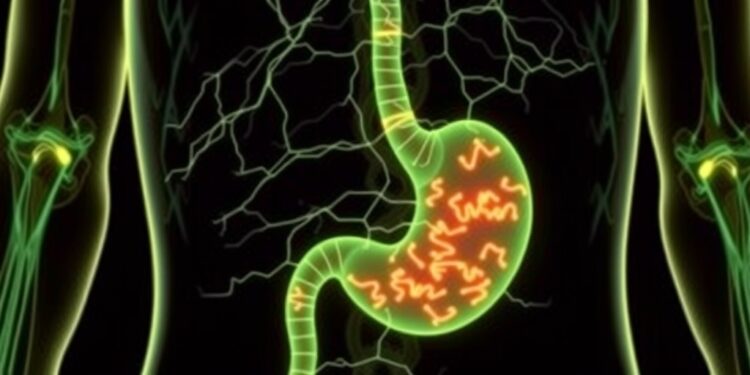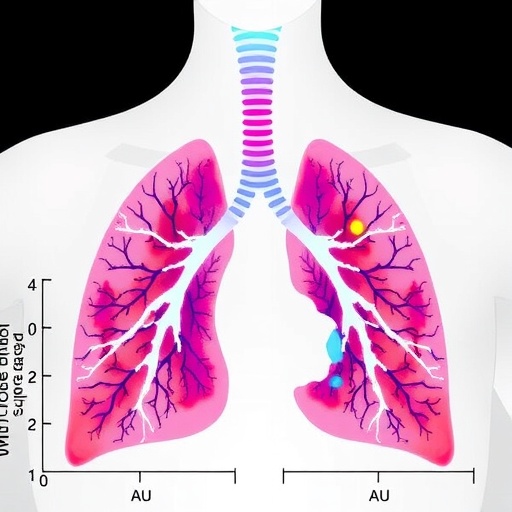
In a groundbreaking study, researchers at Columbia University have unveiled a startling mechanism by which stomach cancers exploit their neighboring sensory nerves to enhance their growth and dissemination. This discovery establishes the first documented instance of direct electrical connections between cancer cells and nerves outside of the central nervous system, suggesting that similar strategies may be employed by a variety of tumors to facilitate their progression. The study, which signifies a leap in our understanding of cancer biology, underscores the intricate relationship between tumors and the nervous system, a relationship that has largely been overshadowed by the focus on immune cells, blood vessels, and other components of the tumor microenvironment.
This innovative research led by Timothy Wang, a prominent figure in cancer neuroscience, sheds light on how tumors can develop electrical circuits that not only communicate with but also manipulate local neurons. Wang’s long-standing interest in gastrointestinal cancers, particularly stomach cancer, has driven his investigation into the ways these tumors leverage their surroundings to foster an environment conducive to their proliferation. Their findings prompt a reevaluation of cancer’s complex biology, highlighting the potential of nerves to serve as facilitators of tumor growth rather than merely passive components in the surrounding tissue.
The researchers concentrated on sensory neurons associated with the vagus nerve, identifying that these neurons exhibited a pronounced response to the presence of stomach cancer in experimental models. They revealed that cancer cells release a protein known as Nerve Growth Factor (NGF), which attracts sensory neurons into the tumor space. This proximity allows the cancer cells to induce the nerves to release Calcitonin Gene Related Peptide (CGRP). The resulting electrical signals generated a feedback loop that perpetuated tumor growth, establishing a bidirectional communication pathway that significantly influences the behavior of the malignancy.
The study’s authors utilized advanced imaging techniques to detect calcium influx as a surrogate marker of electrical activity, allowing them to visualize the dynamic interactions between cancer cells and neurons. Their findings indicate that the electrical activity does not mirror classical synaptic interactions, but still represents a functional circuit between neurons and cancer cells. This novel circuit forms a complex network that appears to bolster tumor growth and may even impact how the surrounding immune environment responds to the tumor.
Interestingly, this research not only elucidates a new mechanism of tumor progression but also opens the door for innovative therapeutic strategies. Wang’s team discovered that administration of CGRP inhibitors, which are currently used to manage migraines, was able to significantly reduce tumor sizes and transit in mice afflicted with stomach cancer. This revelation ignites hope that existing neurological drugs might be repurposed to target these aberrant connections, representing a dual benefit of improving migraine therapy while simultaneously tackling cancer.
Moreover, the potential mechanisms by which sensory neurons may contribute to cancer growth extend beyond this direct signaling pathway. Preliminary findings from Wang’s lab suggest that these neurons could indirectly influence cancer progression through interactions with other cells in the tumor microenvironment, such as connective tissue cells. As research continues, it may reveal a multitude of ways that the nervous system interacts with tumors, complicating our understanding of malignancies even further.
The revelations of this study present profound implications for future cancer therapies. By recognizing that a significant portion of tumor growth may be mediated through neural circuits, scientists may establish new methods to disrupt these interactions. This paradigm shift prompts consideration of neurological pathways as legitimate targets for cancer treatment, creating an exciting intersection between oncology and neuroscience that could foster novel therapeutic avenues.
What remains clear is the imperative to broaden the lens through which researchers examine cancer biology. Incorporating the role of the nervous system into cancer research not only enriches our understanding of tumor behavior but also enhances the potential for developing effective treatment strategies. Wang’s assertion that nerves act as master regulators during normal growth further reinforces the idea that understanding their roles in cancer can unravel new complexities in tumor biology.
In conclusion, the pioneering work conducted by Wang and his collaborators is just the beginning of a new frontier in cancer research. As scientists deepen their explorations into the neurological underpinnings of tumor growth and therapy resistance, it is likely that the detection and targeting of electrical circuits in cancer cells will form a cornerstone of innovative treatment modalities. This groundbreaking study serves as a clarion call to the scientific community to explore the broader implications of neural-tumor interactions, as these connections could reshape the future of cancer therapy.
By revealing the electrical connections between cancer cells and sensory neurons, this research not only contributes valuable insights into the progression of stomach cancers but also poses significant implications for a broader array of malignancies, potentially aiding in the development of effective new treatments that may one day stem the tide of cancer’s devastating reach.
Subject of Research: Electrical connections between nerves and stomach cancer cells
Article Title: Nociceptive neurons promote gastric tumor progression via a CGRP/Ramp1 axis
News Publication Date: 19-Feb-2025
Web References: Nature
References: Columbia University Irving Medical Center resources and previous studies on cancer-neuron interactions.
Image Credits: Columbia University Irving Medical Center
Keywords: Stomach cancer, Tumor growth, Cancer neuroscience, Electrical signaling in cancer, CGRP inhibitors, Tumor microenvironment.
Tags: cancer biology advancementscancer metastasis mechanismscancer neuroscience breakthroughselectrical connections in cancergastrointestinal cancer studiesinfluence of nerves on tumorsinnovative cancer treatment strategiesnerve-cancer interactionssensory nerves and tumorsstomach cancer researchTimothy Wang cancer researchtumor microenvironment dynamics





